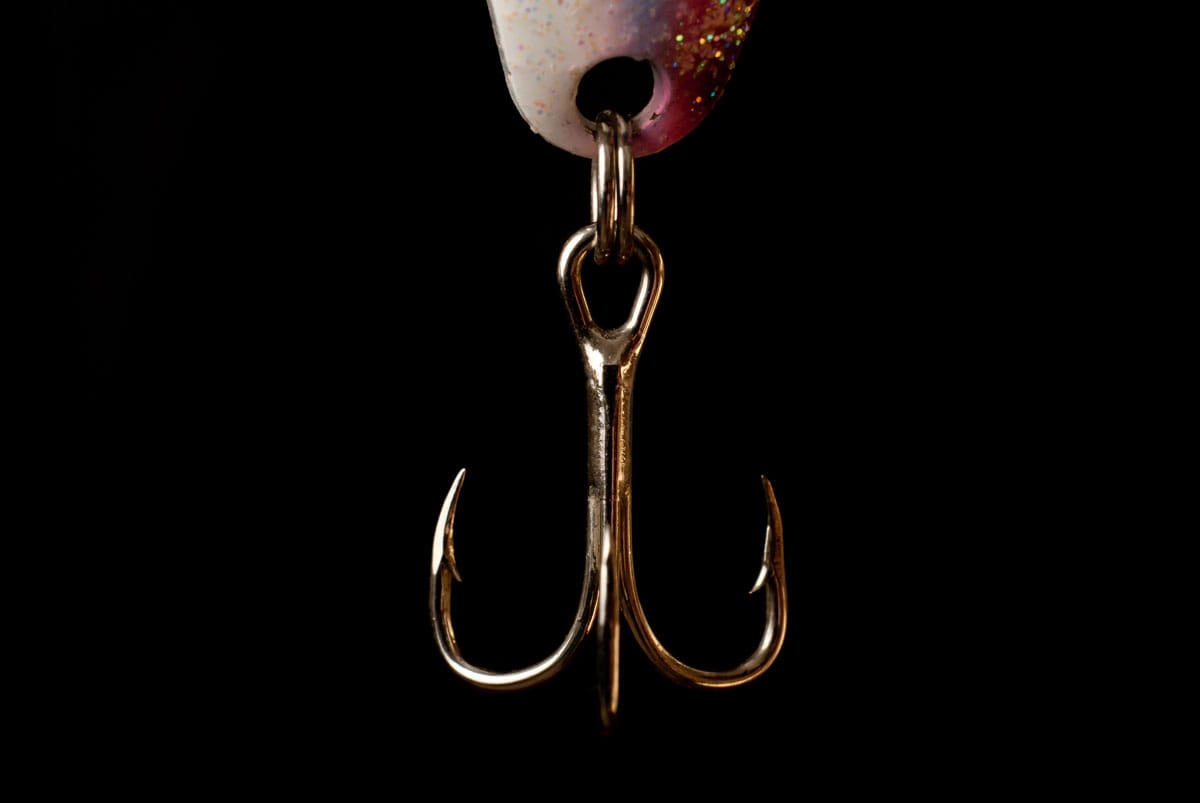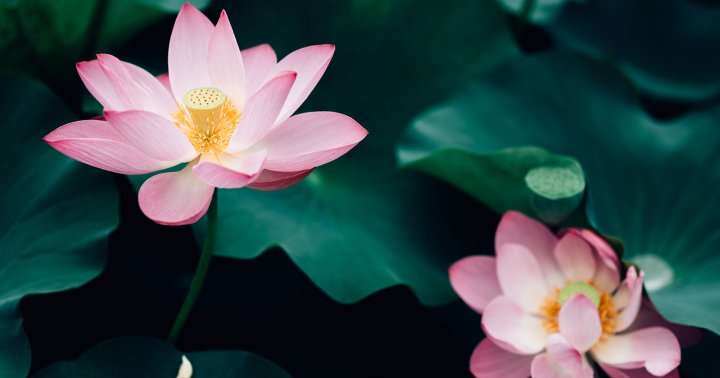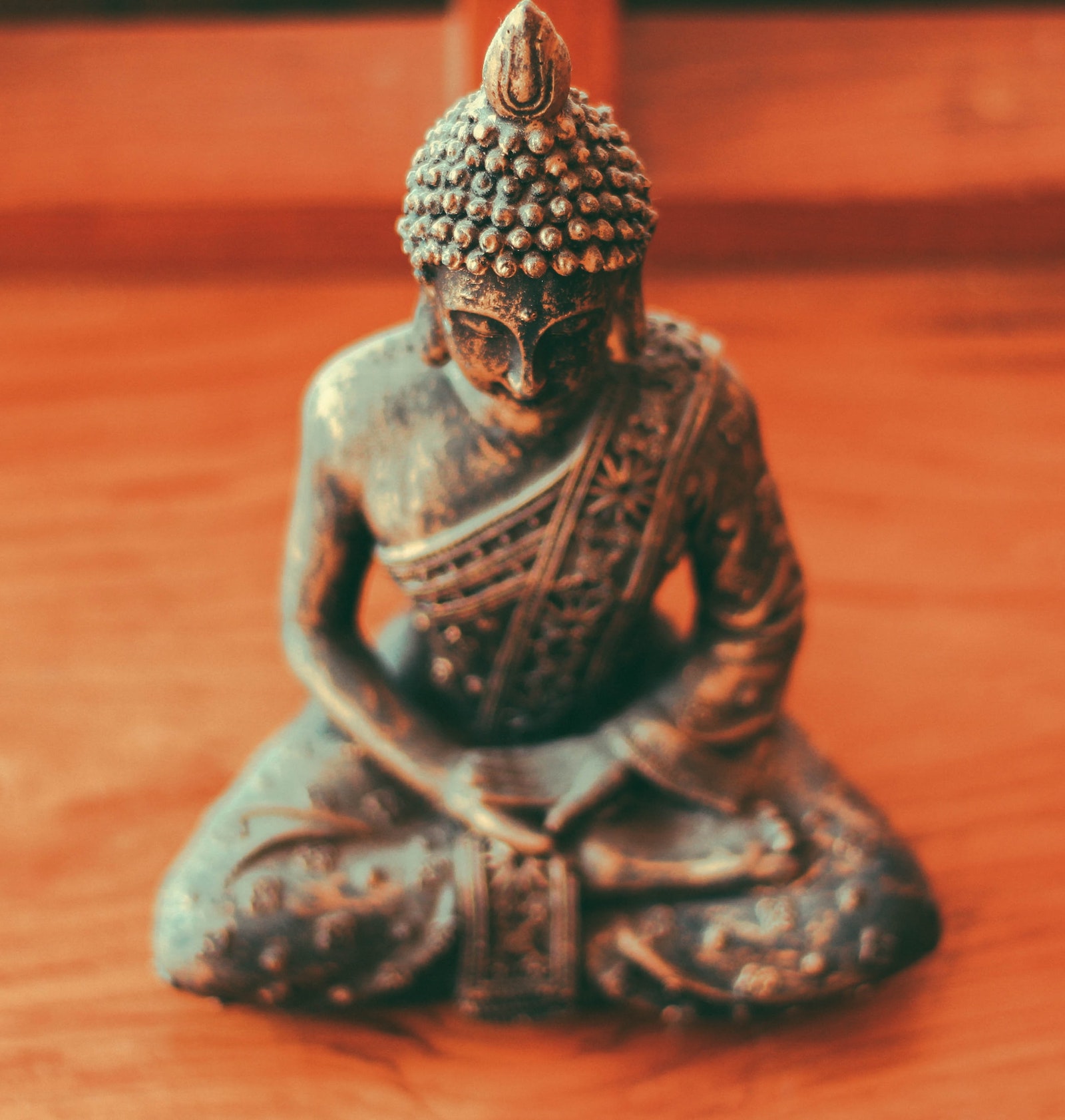How We Get Hooked and How We Get Unhooked
Shenpa is the urge, the hook, that triggers our habitual tendency to close down. We get hooked in that moment of tightening when we reach for relief. To get unhooked we begin by recognizing that moment of unease and...

Pema Chödrön on shenpa, or the urge, the hook, that triggers our habitual tendency to close down. We get hooked in that moment of tightening when we reach for relief. To get unhooked, we begin by recognizing that moment of unease and learn to relax in that moment.
You’re trying to make a point with a coworker or your partner. At one moment her face is open and she’s listening, and at the next, her eyes cloud over or her jaw tenses. What is it that you’re seeing?
Someone criticizes you. They criticize your work or your appearance or your child. At moments like that, what is it you feel? It has a familiar taste in your mouth, it has a familiar smell. Once you begin to notice it, you feel like this experience has been happening forever.
The Tibetan word for this is shenpa. It is usually translated “attachment,” but a more descriptive translation might be “hooked.” When shenpa hooks us, we’re likely to get stuck. We could call shenpa “that sticky feeling.” It’s an everyday experience. Even a spot on your new sweater can take you there. At the subtlest level, we feel a tightening, a tensing, a sense of closing down. Then we feel a sense of withdrawing, not wanting to be where we are. That’s the hooked quality. That tight feeling has the power to hook us into self-denigration, blame, anger, jealousy and other emotions which lead to words and actions that end up poisoning us.
Shenpa is usually involuntary and it gets right to the root of why we suffer.
Remember the fairy tale in which toads hop out of the princess’s mouth whenever she starts to say mean words? That’s how being hooked can feel. Yet we don’t stop—we can’t stop—because we’re in the habit of associating whatever we’re doing with relief from our own discomfort. This is the shenpa syndrome. The word “attachment” doesn’t quite translate what’s happening. It’s a quality of experience that’s not easy to describe but which everyone knows well. Shenpa is usually involuntary and it gets right to the root of why we suffer.
Someone looks at us in a certain way, or we hear a certain song, we smell a certain smell, we walk into a certain room and boom. The feeling has nothing to do with the present, and nevertheless, there it is. When we were practicing recognizing shenpa at Gampo Abbey, we discovered that some of us could feel it even when a particular person simply sat down next to us at the dining table.
Shenpa thrives on the underlying insecurity of living in a world that is always changing. We experience this insecurity as a background of slight unease or restlessness. We all want some kind of relief from that unease, so we turn to what we enjoy—food, alcohol, drugs, sex, work or shopping. In moderation what we enjoy might be very delightful. We can appreciate its taste and its presence in our life. But when we empower it with the idea that it will bring us comfort, that it will remove our unease, we get hooked.
So we could also call shenpa “the urge”—the urge to smoke that cigarette, to overeat, to have another drink, to indulge our addiction whatever it is. Sometimes shenpa is so strong that we’re willing to die getting this short-term symptomatic relief. The momentum behind the urge is so strong that we never pull out of the habitual pattern of turning to poison for comfort. It doesn’t necessarily have to involve a substance; it can be saying mean things, or approaching everything with a critical mind. That’s a major hook. Something triggers an old pattern we’d rather not feel, and we tighten up and hook into criticizing or complaining. It gives us a puffed-up satisfaction and a feeling of control that provides short-term relief from uneasiness.
Those of us with strong addictions know that working with habitual patterns begins with the willingness to fully acknowledge our urge, and then the willingness not to act on it. This business of not acting out is called refraining. Traditionally it’s called renunciation. What we renounce or refrain from isn’t food, sex, work or relationships per se. We renounce and refrain from the shenpa. When we talk about refraining from the shenpa, we’re not talking about trying to cast it out; we’re talking about trying to see the shenpa clearly and experiencing it. If we can see shenpa just as we’re starting to close down, when we feel the tightening, there’s the possibility of catching the urge to do the habitual thing, and not doing it.
Without meditation practice, this is almost impossible to do. Generally speaking, we don’t catch the tightening until we’ve indulged the urge to scratch our itch in some habitual way. And unless we equate refraining with loving-kindness and friendliness towards ourselves, refraining feels like putting on a straitjacket. We struggle against it. The Tibetan word for renunciation is shenlok, which means turning shenpa upside-down, shaking it up. When we feel the tightening, somehow we have to know how to open up the space without getting hooked into our habitual pattern.
If we can see shenpa just as we’re starting to close down, when we feel the tightening, there’s the possibility of catching the urge to do the habitual thing, and not doing it. Without meditation practice, this is almost impossible to do.
In practicing with shenpa, first we try to recognize it. The best place to do this is on the meditation cushion. Sitting practice teaches us how to open and relax to whatever arises, without picking and choosing. It teaches us to experience the uneasiness and the urge fully, and to interrupt the momentum that usually follows. We do this by not following after the thoughts and learning to come back to the present moment. We learn to stay with the uneasiness, the tightening, the itch of shenpa. We train in sitting still with our desire to scratch. This is how we learn to stop the chain reaction of habitual patterns that otherwise will rule our lives. This is how we weaken the patterns that keep us hooked into discomfort that we mistake as comfort. We label the spinoff “thinking” and return to the present moment. Yet even in meditation, we experience shenpa.
Let’s say, for example, that in meditation you felt settled and open. Thoughts came and went, but they didn’t hook you. They were like clouds in the sky that dissolved when you acknowledged them. You were able to return to the moment without a sense of struggle. Afterwards, you’re hooked on that very pleasant experience: “I did it right, I got it right. That’s how it should always be, that’s the model.” Getting caught like that builds arrogance, and conversely it builds poverty, because your next session is nothing like that. In fact, your “bad” session is even worse now because you’re hooked on the “good” one. You sat there and you were discursive: you were obsessing about something at home, at work. You worried and you fretted; you got caught up in fear or anger. At the end of the session, you feel discouraged—it was “bad,” and there’s only you to blame.
Is there something inherently wrong or right with either meditation experience? Only the shenpa. The shenpa we feel toward “good” meditation hooks us into how it’s “supposed” to be, and that sets us up for shenpa towards how it’s not “supposed” to be. Yet the meditation is just what it is. We get caught in our idea of it: that’s the shenpa. That stickiness is the root shenpa. We call it ego-clinging or self-absorption. When we’re hooked on the idea of good experience, self-absorption gets stronger; when we’re hooked on the idea of bad experience, self-absorption gets stronger. This is why we, as practitioners, are taught not to judge ourselves, not to get caught in good or bad.
What we really need to do is address things just as they are. Learning to recognize shenpa teaches us the meaning of not being attached to this world. Not being attached has nothing to do with this world. It has to do with shenpa—being hooked by what we associate with comfort. All we’re trying to do is not to feel our uneasiness. But when we do this we never get to the root of practice. The root is experiencing the itch as well as the urge to scratch, and then not acting it out.
If we’re willing to practice this way over time, prajna begins to kick in. Prajna is clear seeing. It’s our innate intelligence, our wisdom. With prajna, we begin to see the whole chain reaction clearly. As we practice, this wisdom becomes a stronger force than shenpa. That in itself has the power to stop the chain reaction.
Prajna isn’t ego-involved. It’s wisdom found in basic goodness, openness, equanimity—which cuts through self-absorption. With prajna we can see what will open up space. Habituation, which is ego-based, is just the opposite—a compulsion to fill up space in our own particular style. Some of us close space by hammering our point through; others do it by trying to smooth the waters.
We’re taught that whatever arises is fresh, the essence of realization. That’s the basic view. But how do we see whatever arises as the essence of realization when the fact of the matter is, we have work to do? The key is to look into shenpa. The work we have to do is about coming to know that we’re tensing or hooked or “all worked up.” That’s the essence of realization. The earlier we catch it, the easier shenpa is to work with, but even catching it when we’re already all worked up is good. Sometimes we have to go through the whole cycle even though we see what we’re doing. The urge is so strong, the hook so sharp, the habitual pattern so sticky, that there are times when we can’t do anything about it.
The work we have to do is about coming to know that we’re tensing or hooked or “all worked up.” That’s the essence of realization.
There is something we can do after the fact, however. We can go sit on the meditation cushion and re-run the story. Maybe we start with remembering the all-worked-up feeling and get in touch with that. We look clearly at the shenpa in retrospect; this is very helpful. It’s also helpful to see shenpa arising in little ways, where the hook is not so sharp.
Buddhists are talking about shenpa when they say, “Don’t get caught in the content: observe the underlying quality—the clinging, the desire, the attachment.” Sitting meditation teaches us how to see that tangent before we go off on it. It basically comes down to the instruction, “label it thinking.” To train in this on the cushion, where it’s relatively easy and pleasant to do, is how we can prepare ourselves to stay when we get all worked up.
Then we can train in seeing shenpa wherever we are. Say something to another person and maybe you’ll feel that tensing. Rather than get caught in a story line about how right you are or how wrong you are, take it as an opportunity to be present with the hooked quality. Use it as an opportunity to stay with the tightness without acting upon it. Let that training be your base.
You can also practice recognizing shenpa out in nature. Practice sitting still and catching the moment when you close down. Or practice in a crowd, watching one person at a time. When you’re silent, what hooks you is mental dialogue. You talk to yourself about badness or goodness: me-bad or they-bad, this-right or that-wrong. Just to see this is a practice. You’ll be intrigued by how you’ll involuntarily shut down and get hooked, one way or another. Just keep labeling those thoughts and come back to the immediacy of the feeling. That’s how not to follow the chain reaction.
Once we’re aware of shenpa, we begin to notice it in other people. We see them shutting down. We see that they’ve been hooked and that nothing is going to get through to them now. At that moment we have prajna. That basic intelligence comes through when we’re not caught up in escaping from our own unease. With prajna we can see what’s happening with others; we can see when they’ve been hooked. Then we can give the situation some space. One way to do that is by opening up the space on the spot, through meditation. Be quiet and place your mind on your breath. Hold your mind in place with great openness and curiosity toward the other person. Asking a question is another way of creating space around that sticky feeling. So is postponing your discussion to another time.
At the abbey, we’re very fortunate that everybody is excited about working with shenpa. So many words I’ve tried using become ammunition that people use against themselves. But we feel some kind of gladness about working with shenpa, perhaps because the word is unfamiliar. We can acknowledge what’s happening with clear seeing, without aiming it at ourselves. Since no one particularly likes to have his shenpa pointed out, people at the Abbey make deals like, “When you see me getting hooked, just pull your earlobe, and if I see you getting hooked, I’ll do the same. Or if you see it in yourself, and I’m not picking up on it, at least give some little sign that maybe this isn’t the time to continue this discussion.” This is how we help each other cultivate prajna, clear seeing.
Once we see how we get hooked and how we get swept along by the momentum, there’s no way to be arrogant. The trick is to keep seeing.
We could think of this whole process in terms of four R’s: recognizing the shenpa, refraining from scratching, relaxing into the underlying urge to scratch and then resolving to continue to interrupt our habitual patterns like this for the rest of our lives. What do you do when you don’t do the habitual thing? You’re left with your urge. That’s how you become more in touch with the craving and the wanting to move away. You learn to relax with it. Then you resolve to keep practicing this way.
Working with shenpa softens us up. Once we see how we get hooked and how we get swept along by the momentum, there’s no way to be arrogant. The trick is to keep seeing. Don’t let the softening and humility turn into self-denigration. That’s just another hook. Because we’ve been strengthening the whole habituated situation for a long, long time, we can’t expect to undo it overnight. It’s not a one-shot deal. It takes loving-kindness to recognize; it takes practice to refrain; it takes willingness to relax; it takes determination to keep training this way. It helps to remember that we may experience two billion kinds of itches and seven quadrillion types of scratching, but there is really only one root shenpa—ego-clinging. We experience it as tightening and self-absorption. It has degrees of intensity. The branch shenpas are all our different styles of scratching that itch.
I recently saw a cartoon of three fish swimming around a hook. One fish is saying to the other, “The secret is non-attachment.” That’s a shenpa cartoon: the secret is—don’t bite that hook. If we can catch ourselves at that place where the urge to bite is strong, we can at least get a bigger perspective on what’s happening. As we practice this way, we gain confidence in our own wisdom. It begins to guide us toward the fundamental aspect of our being—spaciousness, warmth and spontaneity.

 Kass
Kass 

































